- Home
- Allison Brennan
The Third to Die Page 12
The Third to Die Read online
Page 12
“We confirmed her identity and her hire date—she graduated from the police academy twelve years ago this coming July and received her gold shield five years ago.”
“She’s been a cop for twelve years? She’s too young.”
“She’s thirty.”
He’d figured she was closer to twenty than thirty. And she made detective when she was twenty-five? Not unheard of, but certainly rare for anyone, man or woman.
“Do you want me to get more?”
“No, if I need anything else I’ll let you know. I had a heart-to-heart with Quinn yesterday and we have too many other irons in the fire to worry about why a vacationing cop wants to spend all her time investigating a murder. By the way, you’re doing great. Trial by fire.”
“Thank you, sir.”
“Elimínalo con los malditos señores,” he mumbled. Matt wished Ryder would just knock it off with ‘sir.’
Ryder just smiled and went back to work.
Matt read the note with the LA-FBI contact information. He hadn’t explicitly told Quinn he wouldn’t contact the FBI, but he’d implied it, and he was a man of his word. He sent the ASAC—Bryce Thornton—a brief email—apologized for bothering him, that he got what he needed from LAPD, thanks anyway. Then he sent Andy Knolls and Brian Maddox a message that he wanted to meet with them before the press briefing to talk about the case because he had additional information from the FBI profiler.
He was in the middle of crafting the message he wanted to hand-feed to the press when his cell phone rang. Portland area code.
“Costa.”
“Agent Costa? This is Detective Gino Jacoby from Portland. I worked the Anne Banks homicide.”
“Thank you for calling me back. I won’t beat around the bush. As you know, we believe that Anne was the first victim of the Triple Killer. We just caught another case here outside Spokane, Washington, but I was hoping to pick your brain more about the Banks case.”
“You know there’s disagreement about whether those six murders are truly connected,” Jacoby said.
“Perhaps among some agencies, but not ours. We’re not only positive the six murders were the work of the same killer, but he killed a nurse in the Spokane suburb of Liberty Lake two days ago. We believe he intends to murder two more victims before moving on. And I think we can stop him.”
“How can I help?”
“We’re doing a deep background on all seven victims, but because Banks was the first known victim, I wanted to reach out directly to find out everything you know about her life prior to her moving to Portland.”
“I can pull that together. I don’t think we went that far back, though. She was born in Idaho as Anne Goodman—that much I know—but she’d been married and in Portland for more than a decade, no prior marriages.”
“That’s good,” he wrote down her maiden name.
“Her past didn’t seem relevant to the investigation,” Jacoby said defensively.
“I read your reports, Detective. I don’t think you missed anything. You initially thought it might have been an attempted rape?”
“Yes—there had been a series of rapes in another part of the city, all in public parks, all at knifepoint.”
Jacoby continued. “In those rapes, no one had been killed, though two of the victims had been cut. The rapist was caught a month after the Banks homicide, identified by two of his victims. We looked at him, but he had an airtight alibi the morning of Banks’s murder. We also looked long and hard at the husband—I’ve been a cop for twenty years, I’m pretty jaded—but no one could fake that kind of pain. And she was killed in front of her baby—it’s extremely rare that a father would do that. Plus he had no motive. No mistress, for example. Then we looked at her husband’s associates—he was a wealthy entrepreneur who made a lot of people upset when he sold his first company. Some people didn’t fare as well as he did and he’d received threats. But nothing of this magnitude, and nothing directed at his wife or family. It’s been a black spot on my record, I have to say, Agent Costa. That little boy is almost seven years old now and never got to know his mother. The girls are twelve and eleven. Dad never remarried—I don’t think he really got over what happened.”
“Would you be open to speaking with Mr. Banks again?”
“If I can give him something. Three years ago the FBI came talking to him, and it didn’t go well. I was angry that they didn’t come to me first.”
“I understand your frustration, and I need your help. Tell him we believe his wife’s murder is connected to something that may have happened before they were married—I specifically need to know if she was a nurse at any point in her life, and if so, where she worked. This is a thin lead, but the only connection between the victims appears to be their occupation and the only outlier is Anne Banks—but if she was a nurse at one time, she would no longer be an outlier. It would also mean the killer might have some personal connection to her.”
“I can tell you for certain that Mrs. Banks was a nurse when she met her husband—it’s how they met. But that was...jeez, four or five years before they got married. He talked a lot at the beginning, rambled really. I don’t know where she worked, I assumed Portland, but that makes me an idiot—I should have followed up.”
“Not an idiot, Jacoby. Our profiler is thinking that the killer felt injured or slighted by one or more of his victims, but is killing others randomly who have the same occupation in some sort of sick substitution. But Anne wasn’t a practicing nurse at the time, correct?”
“No—according to my notes, she hadn’t worked during her marriage.”
Matt continued. “Plus she was the first victim. If you can talk to the husband, find out anything that stands out as unusual given what we know now, even if he hasn’t thought about his wife’s nursing career in years. See if he remembers all the places she worked, how long, what area of nursing. I know I’m fishing—but it’s a line that’s still in the water and I might get a bite.”
“I’ll call him right now.”
“One more thing—I’ve been going over all the original crime scene photos. The jogging stroller with her baby still in it was found about twenty feet from the body. I’ve read every report. They all indicate that the victim was stabbed and died in the same spot. Why was her baby so far away? If the killer had time to drag her off the path, why didn’t she scream? The baby was down the path from the body. Did she push the baby away to protect him?”
“There’s one thing not in the public reports,” Jacoby said.
“I should have everything, though.”
“It’s a sensitive case, and like I said, the FBI were jerks three years ago so I don’t know that my boss would have been keen on jumping through hoops for you at the time.”
Once again, interoffice jurisdictional bullshit made Matt’s head ache. “Can you tell me now?”
“Every scenario we came up with didn’t work with the evidence we had, except one. Anne was jogging on the path. It had started to rain. She had one earbud in her ear, the other out I assume to listen for traffic, as runners often do. The killer grabbed her from behind—we didn’t believe he was following her on the path because none of the witnesses saw a lone man running behind or keeping pace with a woman with a stroller. The rain both helped and hurt our investigation—we didn’t have much sign of a scuffle because the rain muddied the area, but we did have one good set of footprints, where we think the killer stood and waited for her to pass by. He must have known her route—from what we learned, she rarely deviated, which is why I’ve always told my own daughters never to run on a set schedule and to change their routes often. Anyway, we think she passed her killer but didn’t see him—a tree obscured his hiding place. When he saw her, he sprinted, grabbed her from behind, put his hand over her mouth and pulled her into the foliage only two feet away. That was the basic MO of the rapist across town. Facial evidence indicated e
arly bruising where he held Banks’s mouth. But there were no torn clothes, no signs of attempted rape. The killer then reached around and stabbed her in the gut.”
“He stabbed her from behind?” Matt tried to picture it.
“It’s what the angle of the initial stab wound showed in the autopsy. Plus if he let her go, she would have stumbled, fallen back, screamed, done something. The thinking was, this was quick. Grab and stab. The angle of the initial stab wound lent credence to the theory. It wasn’t straight on. But he pulled the knife up toward her sternum. Cut into her lungs. She wouldn’t have been able to scream at that point. He didn’t just drop her. He laid her down on her back as she was dying and sliced her three more times. Why? Hell if I know.”
“It’s his pattern.”
“He must have pocketed the knife—we never found it—and shoved the stroller down the path. The murderer had blood on his hands. There was blood on the handle of the stroller.”
“Why would he do that? Attempted kidnapping?”
“No idea. Maybe he didn’t want the body discovered right away. Maybe the stroller was in his way, or the baby was crying... Hell if I know. We had no fingerprints—he wore gloves—and only one blood type, the victim’s.”
“Daytime, and no one saw a man with blood on his clothes walking out of the park?”
“I thought the same thing, Costa. It’s bothered me. We had a dozen guys go through that park with a fine-tooth comb. I think I know what he did, but I can’t prove it.”
“Tell me. I’m willing to listen to any theory, no matter how wild.”
“It was raining. Not heavy, just Portland drizzle. I think he wore a slicker, probably a poncho, something that wouldn’t stand out. Dark, to hide the blood. Black, brown, navy. He puts his hands under the poncho and voilà! No one sees anything weird. He jogs from the scene to blend in and when no one is around, he pulls off the poncho, stuffs it in a backpack. Or, he has a car nearby. We scoured the scene and found trace amounts of blood on the trail in the direction he pushed the stroller, then they disappeared. We combed the area in a half-mile radius in search of the weapon, including every garbage can on public and private property. He could have disappeared on public transportation—which we thoroughly investigated—or had his own car nearby. I lean toward car.
“The body was found quickly,” Jacoby continued. “She was dead, but the witnesses missed the killer by no more than seven minutes, based on our canvass of the scene and everyone who was in the park that morning. But in seven minutes he could have been to any of four streets that surround the park and driven off. There were no street cams, not in that neighborhood. It’s busy, mostly young families and artsy types. Safe, low crime.”
“It sounds like you did everything humanly possible,” Matt said.
“I wish I weren’t so human,” Jacoby said. “Three kids are orphans because some bastard killed Anne Banks. I’ll talk to her husband again. You have my number—keep me informed, Costa, okay? I have to know you get the guy—and that it’s the right guy. I’ll call you if I learn anything new.”
Twenty minutes later, while Matt was putting together a large whiteboard of the seven victims and every common trait between them, Jacoby called him back.
“I don’t know if this means anything,” Jacoby said, “but Anne Banks, maiden name Goodman, was a nurse at Spokane General for seven years before moving to Portland to get married. That’s where they’d met—her husband was speaking at a tech symposium at the college there and got food poisoning. She was on duty in the emergency room.”
Matt nearly jumped out of his seat. “She was a trauma nurse?”
“Yes—does that mean anything?”
“The first victims in both Missoula and in Liberty Lake were trauma nurses. And get this—at least one of them worked at Spokane General. This has to be it, Detective. This is the connection. It goes back to Anne Banks when she was a nurse. Do you have anything else? Friends of hers from then? Anyone who is still in Spokane or knew her from the hospital?”
“One person—an Olivia Gunderson. She’s still a nurse at Spokane General—runs the neonatal unit—and had been Anne’s maid of honor. Mr. Banks said she visits the kids a couple times a year. I’ll email you her contact information.”
“Thank you, Gino. I’ll let you know what comes of this.”
Matt hung up. “Ryder,” he said, “finish working on the backgrounds, specifically the employment history for victim four, Sophia Kwan. See if she ever worked at Spokane General. Find out if any of the other victims have any connection to Spokane General, as a patient or a family member that was a patient or in any employment capacity, medical or not. Two victims are connected to the same employer—we have to dig deeper. Look at any connection between all seven victims and Spokane and the surrounding area. Did they work here, go to school here—we have a major university a stone’s throw away. Did our professor in Missoula start here at Gonzaga? Call Tony and tell him we may need a warrant for any lawsuits that Banks was party to—I know hospitals and nurses and doctors are sued all the time. There might be something there.”
“Sir, the hospital attorneys will think you’re fishing.”
“Just tell Tony I’m working on something tangible to give the fucking lawyers.”
Matt wasn’t positive he was on the right track, but he felt he was definitely in the ballpark. Two victims had been nurses at Spokane General. One, more than a decade ago. Did they know each other at some point? More importantly, had the killer known? And what was the significance?
Matt pulled out Anne Banks’s autopsy report, keeping the conversation he just had with Detective Jacoby in mind.
The killer grabbed her and stabbed her from behind. Then he laid her body down and sliced her three times across.
No matter how he analyzed it, as Jacoby said, the kill had been fast. No drugs or sedatives had been found in the tox screen. The murderer stalked Banks, knew where she ran, stabbed and killed her without hesitation.
His instinct told him that Anne Banks wasn’t his first victim. No one can be that quick, that meticulous, that prepared and able to kill without hesitation on his first kill. Matt supposed adrenaline might play a role, but normally there’d still be some hesitation, a mistake, no matter how small. This monster made none. The victim had no time to scream. No time to fight back. She had no defensive wounds. Even if she had tried to grab him, his slick poncho wouldn’t have given her traction.
He called Catherine.
“I don’t have anything else for you, Matt.” She sounded weary.
He gave her the bare bones about what he learned from Jacoby.
“She worked at the same hospital where Victoria Manners worked?”
“Yes.”
“That’s good. That’s a connection.” Catherine now sounded more engaged, almost excited.
“That’s not why I called. When you caught the case three years ago, did you search for any possible victims prior to Anne Banks?”
“There were no crimes that fit the MO, and no similar series of murders on those same dates in any previous year—I looked back fifteen years, not just in three year intervals.”
“I’m looking at Anne Banks’s autopsy report and the crime scene photos. He didn’t hesitate.”
“You’re thinking she wasn’t the first victim. It’s certainly possible he killed before, but there would be another pattern. He is meticulous in the details.”
“What do you mean another pattern?”
“Anne Banks was the first victim killed on March 3 in this manner. If he killed before...well, I’m making a leap here, but he prefers knives, I don’t think he would deviate from his choice of weapon. Still, he may not have created this pattern until Banks.”
“Such as he may have been practicing, leading up to this method.”
“Possibly.”
“Could he have gone from an
imal slayings to human and not hesitate?”
“Hmm.”
“That’s noncommittal.”
“I don’t have enough information. It’s easy to say he started by killing animals, but not all serial murderers start that way. And it is a big jump from animals to people. I will say this—I’m fairly confident that he is motivated to kill for a specific reason. He’s not a thrill seeker—meaning, he didn’t set out to kill merely because it excited him. If that were the case, we’d see more violence to the bodies, less methodical precision, more time playing and cutting. It’s almost—well, he’s doing a job he thinks is necessary as quickly as he can.”
Matt mulled that over. Quick, methodical, a duty. Duty... An obligation maybe.
“Anything else?” Catherine asked.
“I think it’s possible Banks may have recognized him but didn’t see him as a threat. She was with her baby. If he was a stranger, wouldn’t she have screamed?” Matt said.
“I’ve always said that he would blend in, appear average and nonthreatening.”
“I’m going to talk to her best friend,” he said. “They worked together at Spokane General. I’m hoping she’ll give me a path to follow.”
“I’ll look into unsolved homicides on the West Coast,” Catherine said.
He heard her typing, and she said more to herself than to Matt, “Knife, double-sided blade, gutting or stabbing.”
“What are you thinking?” Matt asked. “A lot of unsolved cases are going to pop.”
“Not as many as you think, not with a knife. And I’m limiting the window. It could be he started with another type of vendetta, or he wanted to simply practice. I can’t say—but I think you’re right—based on the evidence, I don’t think that Anne Banks was the first person he killed. But still, she was important to him. She may have been the first person he killed for a specific reason and her death initiated this pattern.”

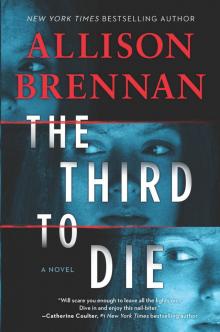 The Third to Die
The Third to Die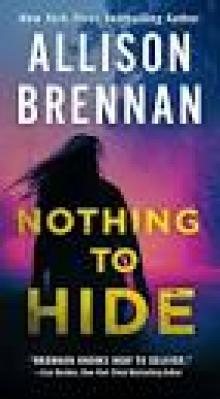 Nothing to Hide
Nothing to Hide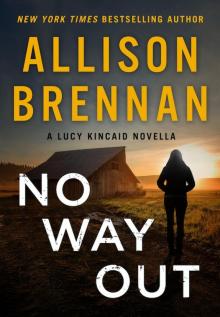 No Way Out
No Way Out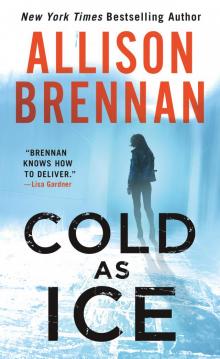 Cold as Ice
Cold as Ice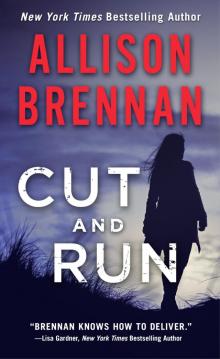 Cut and Run
Cut and Run No Way Out (Lucy Kincaid Novels)
No Way Out (Lucy Kincaid Novels)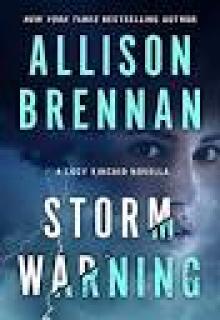 Storm Warning
Storm Warning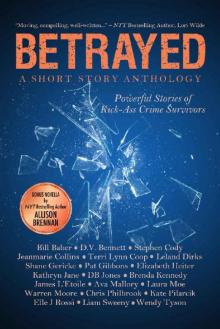 Betrayed: Powerful Stories of Kick-Ass Crime Survivors
Betrayed: Powerful Stories of Kick-Ass Crime Survivors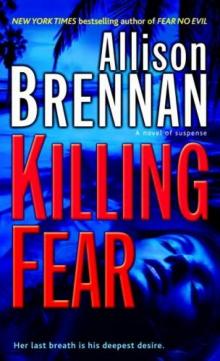 Killing Fear pb-1
Killing Fear pb-1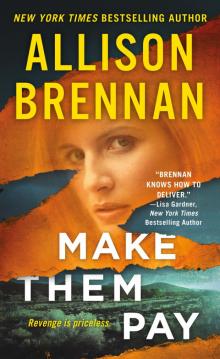 Make Them Pay
Make Them Pay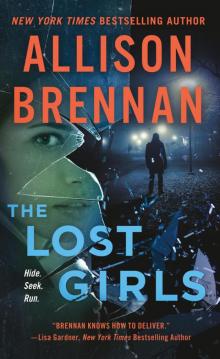 The Lost Girls
The Lost Girls Stalked
Stalked Killing Justice
Killing Justice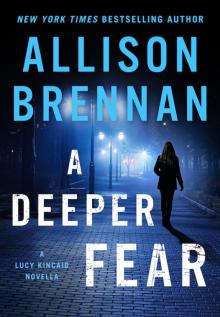 A Deeper Fear
A Deeper Fear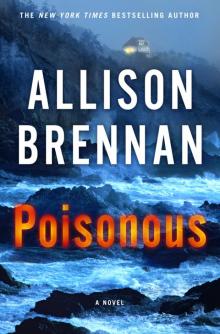 Poisonous
Poisonous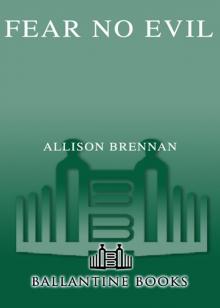 Fear No Evil
Fear No Evil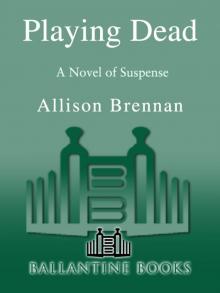 Playing Dead
Playing Dead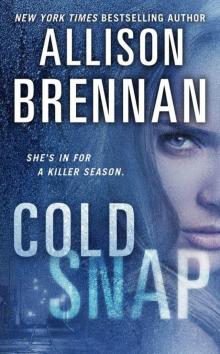 Cold Snap
Cold Snap Vacation Interrupted
Vacation Interrupted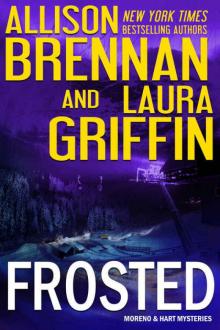 Frosted (Moreno & Hart Mysteries)
Frosted (Moreno & Hart Mysteries)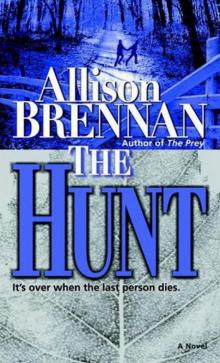 2 - The Hunt
2 - The Hunt Stolen
Stolen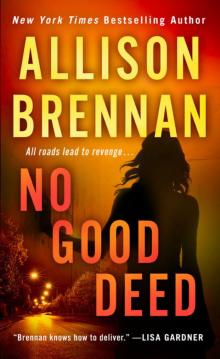 No Good Deed
No Good Deed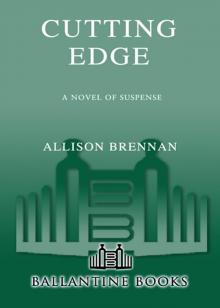 Cutting Edge
Cutting Edge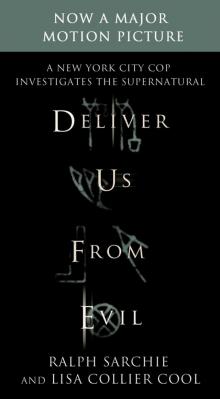 Deliver Us from Evil
Deliver Us from Evil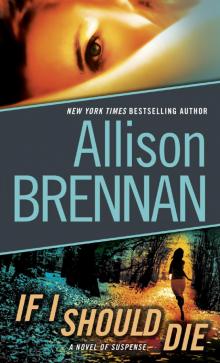 If I Should Die
If I Should Die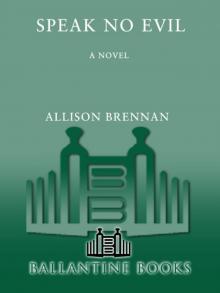 Speak No Evil
Speak No Evil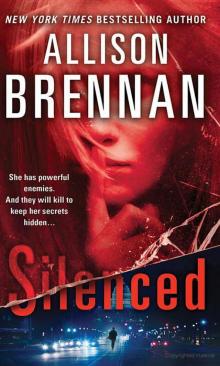 Silenced lk-4
Silenced lk-4 Original Sin sds-1
Original Sin sds-1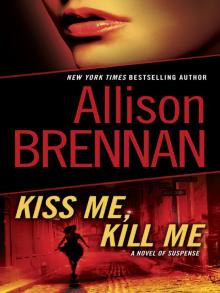 Kiss Me, Kill Me lk-2
Kiss Me, Kill Me lk-2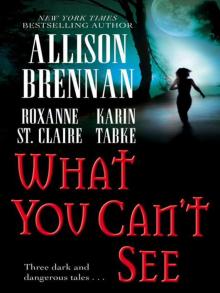 What You Can’t See
What You Can’t See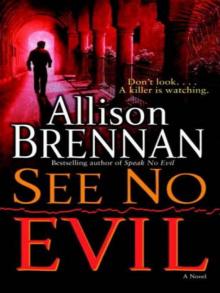 See No Evil
See No Evil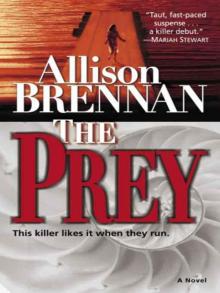 The Prey
The Prey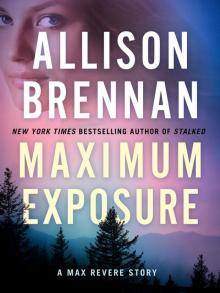 Maximum Exposure
Maximum Exposure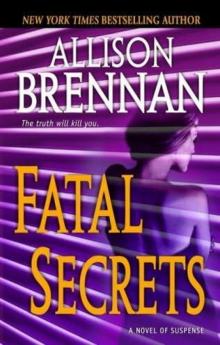 Fatal Secrets f-2
Fatal Secrets f-2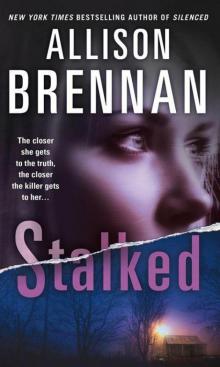 Stalked lk-5
Stalked lk-5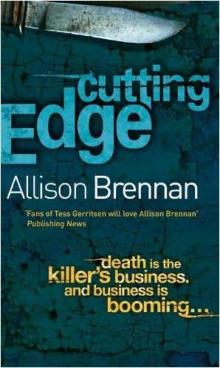 Cutting Edge f-3
Cutting Edge f-3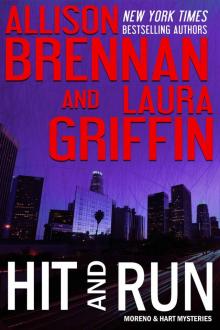 Hit and Run (Moreno & Hart Mysteries)
Hit and Run (Moreno & Hart Mysteries)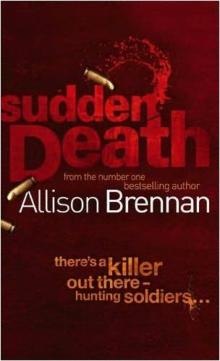 Sudden Death f-1
Sudden Death f-1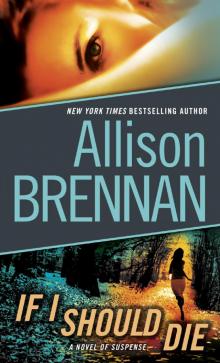 If I Should Die lk-3
If I Should Die lk-3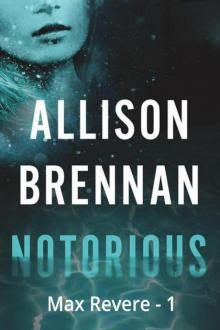 Notorious
Notorious Abandoned
Abandoned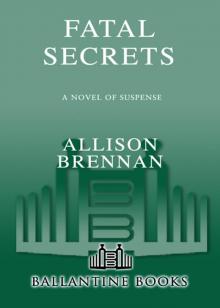 Fatal Secrets
Fatal Secrets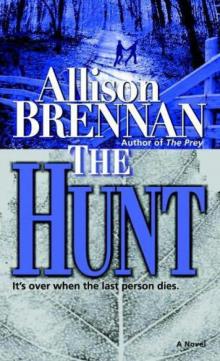 The Hunt
The Hunt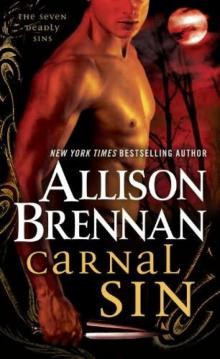 Carnal Sin sds-2
Carnal Sin sds-2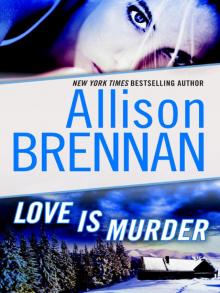 Love Is Murder
Love Is Murder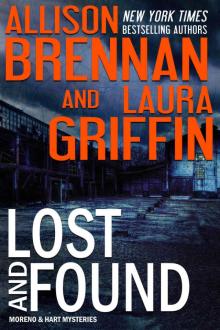 Lost and Found
Lost and Found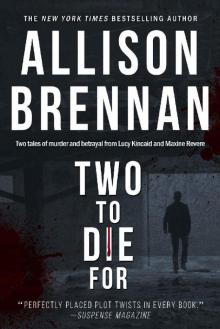 TWO TO DIE FOR
TWO TO DIE FOR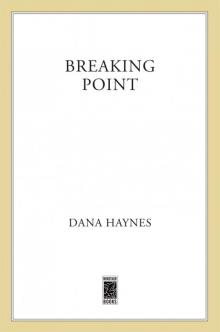 Breaking Point
Breaking Point Best Laid Plans
Best Laid Plans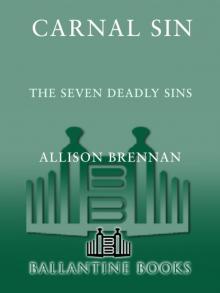 Carnal Sin
Carnal Sin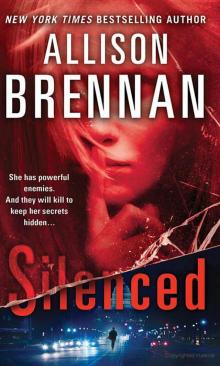 Silenced
Silenced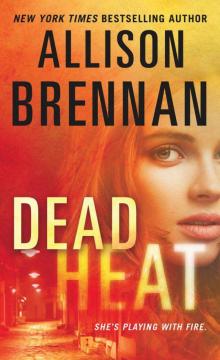 Dead Heat
Dead Heat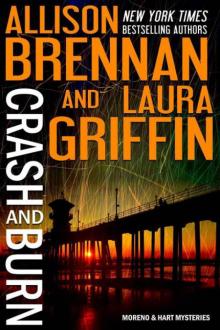 Crash and Burn
Crash and Burn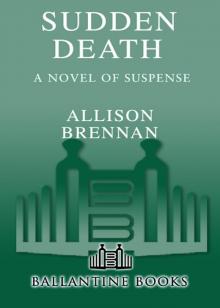 Sudden Death
Sudden Death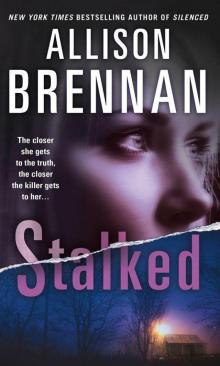 Lucy - 05 - Stalked
Lucy - 05 - Stalked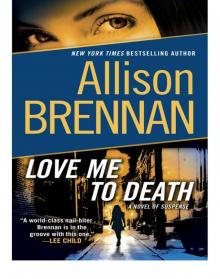 Mortal Sin
Mortal Sin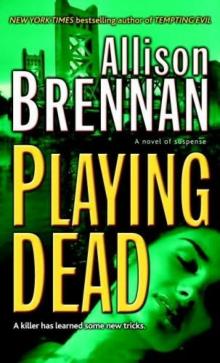 Playing Dead pb-3
Playing Dead pb-3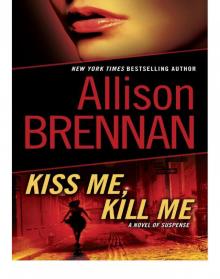 Kiss Me, Kill Me
Kiss Me, Kill Me Original Sin: The Seven Deadly Sins
Original Sin: The Seven Deadly Sins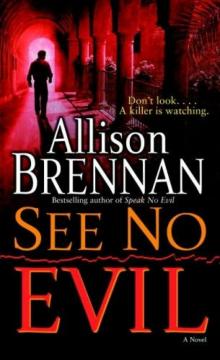 See No Evil e-2
See No Evil e-2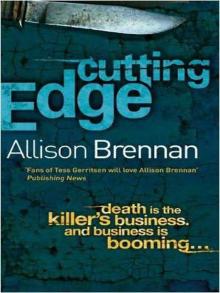 Cutting Edge: A Novel of Suspense
Cutting Edge: A Novel of Suspense Original Sin
Original Sin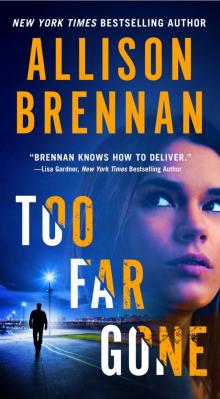 Too Far Gone
Too Far Gone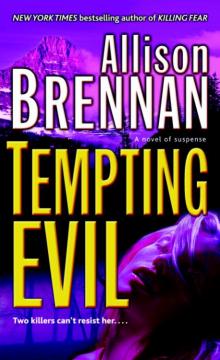 Tempting Evil
Tempting Evil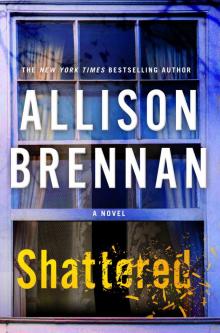 Shattered
Shattered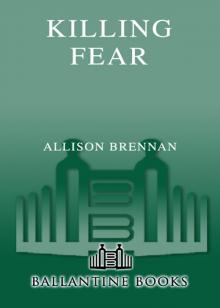 Killing Fear
Killing Fear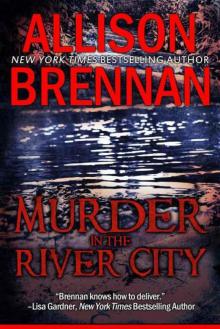 Murder in the River City
Murder in the River City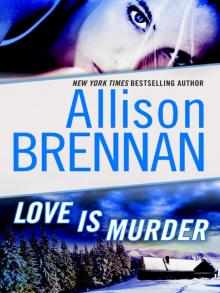 Love Is Murder (lucy kincaid)
Love Is Murder (lucy kincaid)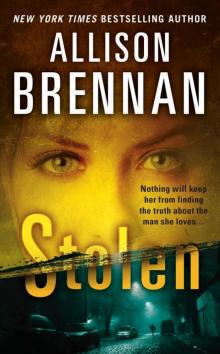 Stolen (Lucy Kincaid Novels)
Stolen (Lucy Kincaid Novels)